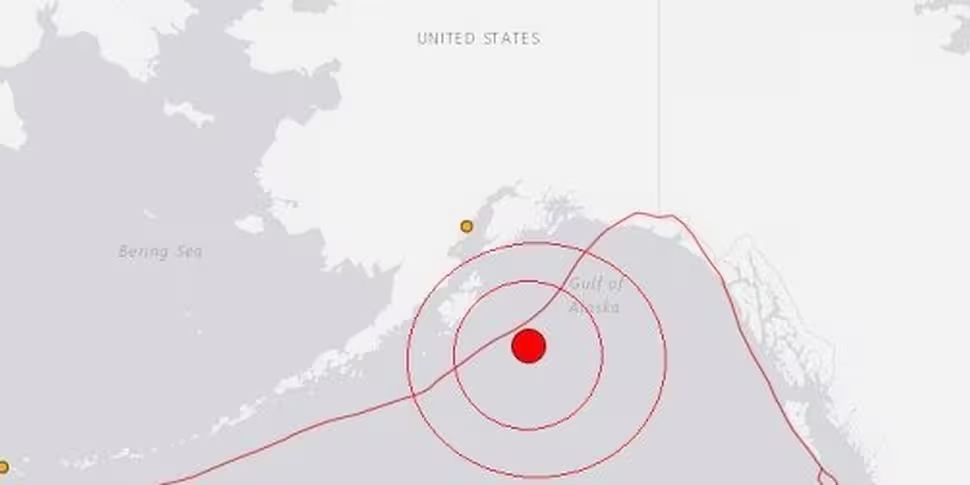Updated 14.40
A warning was issued for "widespread hazardous tsunami waves" following an 8.2 magnitude earthquake off the southeast coast of Alaska.
The quake - among the strongest in US history - hit at a depth of 10km, some 280km southeast of Kodiak Island at 00.31am local time (9.31am in Ireland) on Tuesday, with waves of up to 32ft (10m) reported.
Parts of Alaska and the west coast of Canada were issued with a tsunami warning, while a tsunami watch was put in place for the entire US west coast - with "hazardous waves" said to be possible within the first three hours of the earthquake.
However, the watch status was later cancelled throughout the US and Canada by the National Tsunami Centre, barring areas local to the quake itself in Alaska.
The Pacific Tsunami Warning Centre had said when news of the quake broke: "Based on all available data a tsunami may have been generated by this earthquake that could be destructive on coastal areas even far from the epicentre."
Watches were put in place for British Columbia in Canada, as well as Washington state, Oregon, California and Hawaii.
People in Alaska's largest city, Anchorage, reported feeling the quake, despite being hundreds of kilometres away.
"This is not a drill"
In Kodiak, one of seven communities on Kodiak Island, schools were used as shelters for people who evacuated their homes, with police there telling residents to retreat to higher ground and await further updates.
In a video posted to the Kodiak Police Department Facebook page shortly after the quake, one officer said: "This is not a drill - this is an actual tsunami warning.
"Everybody get at least 100ft above sea level. Everybody get out of your homes and to a safe place. Best place right now is the high school parking lot."
The department later said in a statement: "Remain at high ground. We have received two reports that the tide levels have been fluctuating in the channel six inches to one foot."
But no areas appeared to be under immediate threat, with waves missing their predicted landfall time in Kodiak, which would likely have been the first community to be hit.
In a wider warning for Alaska and British Columbia issued earlier, the Anchorage Office of Emergency Management said: "If you are located in this coastal area, move inland to higher ground. Tsunami warnings mean that a tsunami with significant inundation is possible or is already occurring.
"Tsunamis are a series of waves dangerous many hours after initial arrival time. The first wave may not be the largest."
And in a message sent to smartphones in Alaska, the National Weather Service advised: "Emergency Alert. Tsunami danger on the coast. Go to high ground or move inland."
Several local government websites crashed under the strain of people seeking updates, including the nationwide state-run tsunami.gov.
Only four earthquakes with a greater magnitude have ever been recorded in the US, all of which were in Alaska and caused a tsunami.
The most powerful came on 27 March 1964, when a 9.2 magnitude quake caused ground fissures, collapsed buildings and killed 139 people.
Japan's meteorological agency said it was monitoring the situation but has not issued a tsunami alert.









